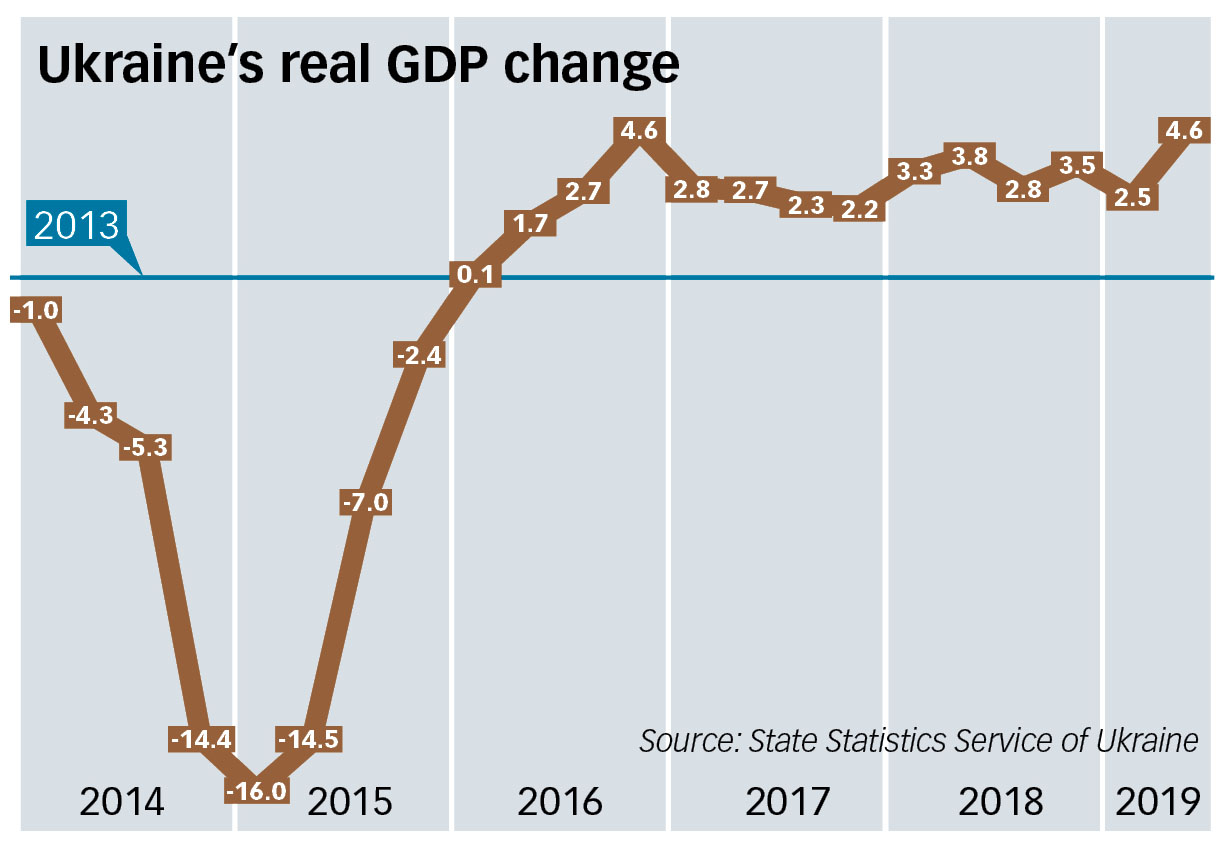Ukraine’s economy is growing faster than expected.
In the second quarter, gross domestic product grew 4.6 percent. The last time Ukraine had this rate of growth was in the third quarter of 2016, according to State Statistics Service.
Experts link this development to a good harvest and business optimism after the landslide electoral victory of President Volodymyr Zelensky in April and his political party in July. The business community so far largely trusts the new president, who has promised to protect it.
But analysts warn that the growth will be shaky and temporary without more foreign direct investment — particularly if rule of law remains just an empty promise.
And Ukraine’s economy remains quite small, at just $130 billion in GDP in 2018, more than $50 billion less than its peak in 2013.
Investment bank Dragon Capital forecast growth of no more than 3.8 percent in the second quarter of 2019. Bloomberg offered even more moderate predictions: 2.7 percent. Reality outpaced their expectations.
“It could be called euphoria, optimism or just a move toward greater trust,” said Tymofiy Mylovanov, honorary president of the Kyiv School of Economics.
Anders Aslund, a senior fellow at the Atlantic Council, said the 2 or 3 percent growth rate, which has held constant for the last three years, was too low given improvements in the business environment and Ukraine’s stable fiscal policy.

After a 2014-2015 recession triggered by Russia’s war, Ukraine returned to economic growth in 2016. But with an economy of only $130 billion in 2018, the growth remains too slow to catch up to the rest of Europe.
“The remaining big concern has been corporate raiding by state law enforcement,” he said. Much hinges on whether Zelensky will secure private property rights for businesses.
Mylovanov says more will be known after the new government is formed in autumn. If it manages to distance itself from oligarchs and protect property rights from harassment by law enforcement — a serious problem — it will keep the business community’s trust.
Another reason for the current growth is a big harvest, which started early this year, Mylovanov adds.
Evgeniya Akhtyrko, an analyst at Concord Capital investment bank, agrees. She says the winter wheat harvest in the second quarter was 10 percent higher than in the same period last year. But growth linked to agriculture is always temporary and depends on the weather.
Dmytro Boyarchuk, executive director of the CASE Ukraine think tank, says Ukraine’s economy mostly relies on agricultural production and remittances from millions of Ukrainians who work abroad and send money to their families in Ukraine. This can’t bring to stable growth.
“Ukrainian workers transfer from abroad about $12 billion every year, which keeps the consumption boom inside the country going,” he said.
The yearly foreign investment in the country’s industry is just $2 billion.
When speaking at a business forum in Istanbul on Aug. 8, Zelensky tried to ensure investors that changes are coming.
“My team and I now have a full mandate for change,” he said.

Ukraine’s per capita gross domestic product was $3,220, the lowest in Europe, according to the International Monetary Fund. Ukraine’s economy is still uncompetitive and dominated by oligarches, exacerbating inequality and poverty.
Zelensky said the government would invest at least $20 billion in the country’s infrastructure, building 24,000 kilometers of highways and developing airports, seaports, and the military industry. It would even legalize gambling.
But Akhtyrko says big infrastructure projects will bring only a short-term result. Large and stable growth can only happen when foreign investors put their money in Ukraine’s industrial projects.
“Foreign investors are still waiting,” she said.
Zelensky promised GDP growth of 5–7 percent per year during his presidency.
Mylovanov says annual growth of 5 and even 7 percent is realistic with rule of law and public trust. But such a rate is unlikely this year and also depends heavily on international markets and export prices.
Aslund says Ukraine’s current inflation level is reasonably low, the budget deficit is declining and the national currency is stronger.
“There is good hope that Ukraine can move from 2–3 percent growth to 6–7 percent growth swiftly,” he said.
